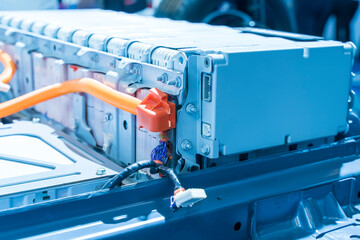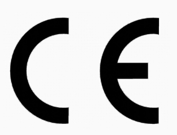
The more you know about battery performance and safety, the easier it is to select the appropriate battery from the multitude of offerings in the marketplace. Selection criteria include Battery Chemistry, Battery Management System (BMS), and Safety Certifications.
.
Comparing Battery Chemistries
The following table lists some popular lithium battery chemistries with a summary of their performance, safety pros and cons, and common applications.
Table 1, Comparison of Battery Chemistries*1
|
Chemistry |
Pros |
Cons |
Applications |
|---|---|---|---|
|
Lithium Cobalt Oxide (LCO) |
|
|
Cell phones, laptops, electronic cameras |
|
Lithium Manganese Oxide (LMO) |
|
|
Medical equipment, power tools, electric motorcycles, electric vehicles, laptops |
|
Lithium Iron Phosphate (LFP) |
|
|
e-bikes, electric vehicles, energy storage |
|
Lithium Nickel Manganese Cobalt Oxide (NMC) |
|
|
Power tools, e-bikes, electric vehicles |
|
Lithium Nickel Cobalt Aluminum Oxide (NCA) |
|
|
Electric vehicles, energy storage |
|
Lithium Titanate (LTO) |
|
|
Electric vehicles, e-bikes, military and aerospace, energy storage |
*1 Reference information compiled from BU-216: Summary Table of Lithium-based Batteries.

While selecting the battery chemistry based on performance may be the first choice in choosing a battery for your application, battery safety has become increasingly prevalent.
For example, the car manufacturer Tesla often uses NMC or NCA batteries. However, Tesla is now adopting LFP batteries in some vehicles because thermal stability has become a higher priority.
LFP batteries, due to their safety record, are the top choice for home energy storage solutions where their high threshold for thermal runaway far outweighs their lower energy density.
However, when it comes to battery safety, it is heavily influenced by the internal or external Battery Management System (BMS).
Battery Management System
The primary job of the BMS is to deliver safety functions, including disconnecting the battery from the charging source if the battery gets too hot, too cold, or the voltage is too high. A BMS with high current ratings safely allows higher charge, discharge, and peak currents. A smart BMS communicates state-of-charge and other parameters in a closed loop with the charger. Some BMS request adjustments to the charging voltage to maximize charging speed (Dynamic Charging) while maintaining a safe battery operating temperature.
While safety is essential for consumer electronics, a low-cost mandate often means there is no BMS, and only basic cell safety protections are in place.
Safety Certification
|
|
|
|
|
Nationally Recognized Labs (NRLs) such as UL, CSA, TUV, and ETL maintain common battery safety standards for various applications. Certification by an NRL to a particular battery standard ensures that an independent third party has thoroughly tested the various safety parameters of the battery. The following are some of the more common UL battery certifications in the United States. Europe has set its own standards. Other regions may closely follow UL or European standards with modifications or set their own.
Table 1, Common Battery Safety Certifications *1
|
Standard |
Description |
|---|---|
|
UL1642 |
Safety certification to avoid risk of fire, explosion, and injury for battery cells that use 5.0 g or less metallic Lithium. |
|
UL2054 |
Safety certification to avoid the risk of fire, explosion, and injury for a battery power source in a product. |
|
UL9540 |
Safety standard for energy storage systems and equipment connecting to a power grid. This standard incorporates both UL1973 (Battery) and UL1741 (Inverter). |
|
UL9540A |
Describes thermal runaway performance of cells, modules, and battery energy storage systems. |
|
UL1973 |
Standard is specific to batteries for light electric rail, stationary, and vehicle auxiliary power applications. |
|
UL2271 |
Safety requirements for designing and manufacturing lithium-ion batteries used in Light Electric Vehicles (LEV), such as golf carts. |
|
UL1741
|
Standard for inverters, converters, controllers, and interconnection system equipment connecting to the grid. |
|
UL1741 Supplement B |
Validates compliance with grid protection and grid support functions for certification as a Grid Support Utility Interactive Inverter. |
|
IEEE 1547 |
Remote control of Distributed Energy Resources (DER) on the grid. |
|
IEEE 1547-2003 |
Utility interconnection standard that requires DER to disconnect when a grid becomes unstable. |
|
IEEE 1547.1-2020 |
Tests to validate compliance with grid interconnection and grid support features of inverters and converters. |
*1 References:
-
Intertek Fact Sheet, "Advanced Inverter Evaluation," April 2022
What Do You Choose?
The more you know about battery performance and safety, the easier it is to select the appropriate battery from the multitude of offerings in the marketplace. Consult with experts when deciding which battery is right for you.










